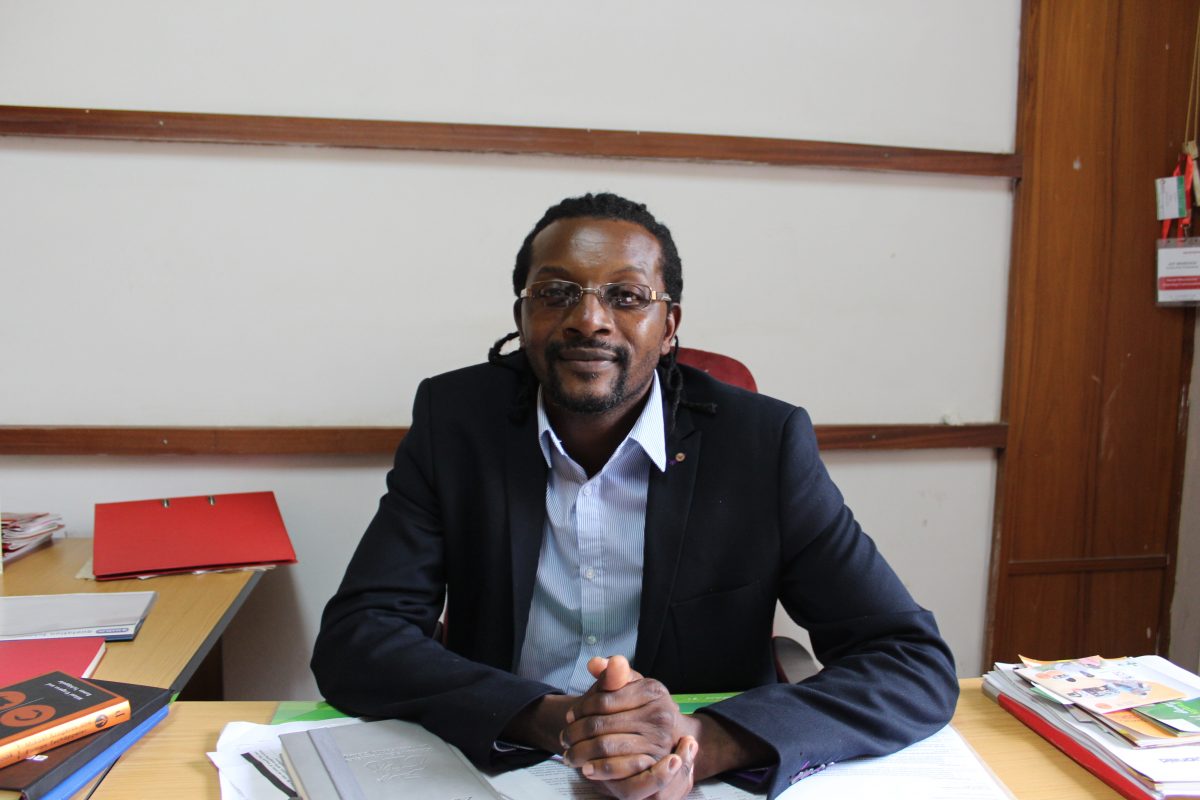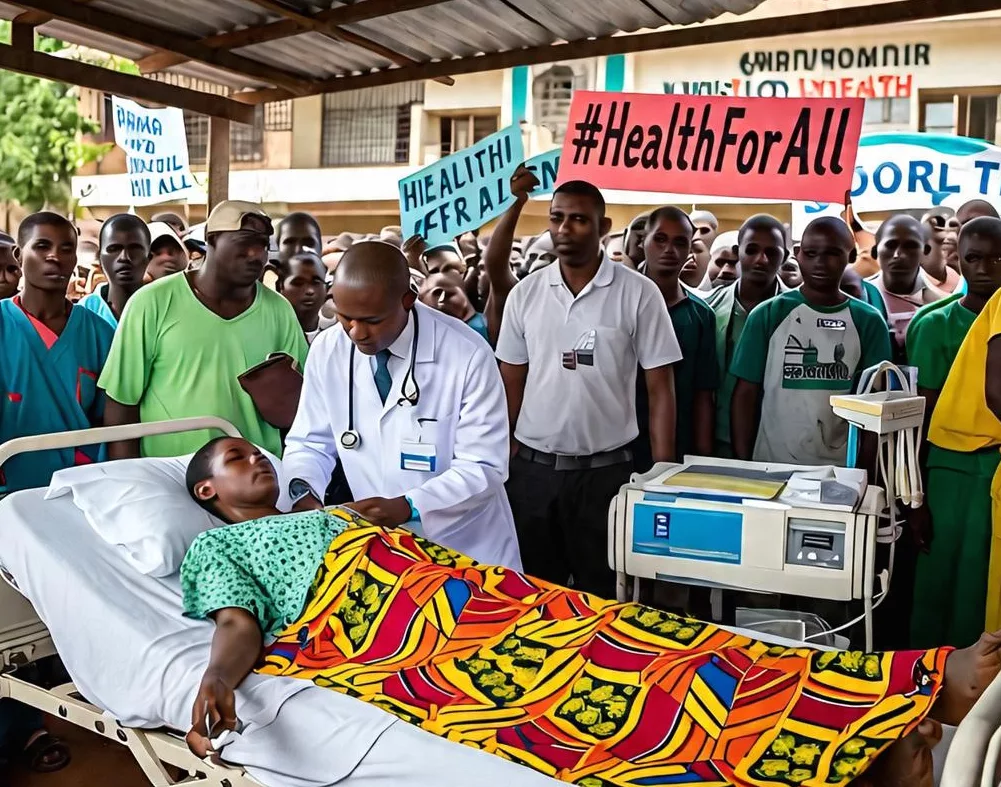Food security situation – Question and Answer
Zimbabwe is facing a debilitating food crisis on the back of climate change induced droughts. In its Humanitarian Plan for 2020, issued in March 2020, the United Nations Office for Coordination of Humanitarian Affairs (UNOCHA) said seven million people in urban and rural areas in Zimbabwe are in urgent need of humanitarian assistance compared to 5.5 million in August 2019.
With the World Food Programme having classified Zimbabwe to be experiencing very high prevalence of insufficient food intake, several interventions have been made by various stakeholders to address the unfolding situation.
To get an in-depth appreciation of the situation on the ground and efforts made so far, Spiked Online Media sat with ActionAid Zimbabwe’s Country Director, Joy Mabenge (JM) to discuss their work in combating the food crisis.
Q1: To begin with, what is your assessment of and how widespread is the food security situation in the country?
JM: In a Domestic and International Humanitarian Assistance appeal for April 2020-April 2021, the Government of Zimbabwe has made a plea of US$2.2 billion with immediate effect for providing humanitarian assistance in the short to medium term. The government said about 7.7 million people in both urban and rural areas (5.5 million rural and 2.2 million urban) will require urgent food assistance.
Zimbabwe is currently facing a severe drought caused by poor rainfall that affected harvests in 2018/2019 planting season. In August 2019, the President of Zimbabwe declared the 2018/19 drought and cropping season ‘a state of National Disaster, and later appealed for humanitarian assistance. In 2020, the government has made an appeal for assistance but has not declared the food crisis a disaster.
Food security remains a major concern as a large proportion of poor households have exhausted their food stocks, and are currently in need of food assistance, with provinces such as Manicaland, Masvingo, Matabeleland North and Matabeleland South being the most affected. In addition, shortages of water for domestic and livestock use is negatively affecting many livelihood activities, leading to poor pasture conditions and resulting in poor livestock body conditions across the country. The COVID-19 has also worsened the situation were vulnerable communities were now relying on wild fruits and reducing to one meal a day or non which has affected their health.
Q2: What interventions has ActionAid made in response to the crisis?
JM: In response the unfolding humanitarian and food security crises, ActionAid Zimbabwe is implementing the WFP Lean Season Assistance programme in Makoni and Nyanga districts reaching 92786 people between January and April 2020. The organisation is supporting 5046 people in Chimanimani and Chipinge districts through its Women Led Early Recovery Cyclone Idai Response Programme from September 2019 to September 2020. ActionAid and its Value Chain Alliance Livestock Upgrading Programme partners supported under the European Union funded Zimbabwe Agricultural Growth Programme are implementing a commercialisation project to build communities that are more resilience to shocks and stresses such as droughts reaching 11 000 people in six provinces namely Manicaland, Matabeleland South, Matabeleland North, Mashonaland Central, Mashonaland East and Mashonaland West. As part of the humanitarian support to the situation in Zimbabwe, ActionAid and partners under the Zimbabwe Resilience Building Programme (ZRBF) are supporting 218005 people in the three districts of Binga, Kariba and Mbire.
Q3: In terms of geographical coverage, which areas are you working in?
JM: ActionAid Zimbabwe is currently implementing programmes in seven provinces namely Manicaland, Mashonaland Central, Mashonaland West, Mashonaland East, Matabeleland North, Matabeleland South and Harare. where we are implementing various programmes focusing on social justice, gender equality and poverty eradication. In line with our feminist approaches, all our programmes mainstream women’s rights issues because women have historically been lagging in all sectors locally, regionally and internationally.
Q4: How will the outbreak of COVID-19 affect those that are food insecure?
JM: COVID-19 has come in at a time when the country is already in induced hunger crisis which is becoming more profound. In the process, the most vulnerable people get affected more than anyone else as the situation will force communities to prioritise and share the little resources, they have between securing the food and procuring the required preventive materials.
Women and girls living in poverty will be deeply affected by the pandemic. They will also be at the forefront of fighting this crisis worldwide. Like all emergencies and humanitarian crises, the coronavirus pandemic will hit women, the poor and the most marginalised the hardest. Coronavirus cases are increasing in Zimbabwe at the same time as we’re responding to the food and climate crisis in Zimbabwe. Severe drought in Zimbabwe, means women are walking all day to find water and their children are only able to bathe once a week. They’re surviving by foraging for wild fruits. How can people follow health and hand-washing advice during droughts and water shortages? ActionAid Zimbabwe is therefore putting together women-led response plans that target the most vulnerable communities we work with.
Q5: How will it affect AAZ food distribution plans which are taking place now and what measures has AAZ taken?
JM: WHO set out some measures and health protocol that should be followed and because of this, the distribution period will take longer than planned as more food distribution points have to be established in order to adhere to Government directive of not carrying out any activity with people who are more than fifty (50) at any given point. Observing the social distance is another issue as communities are used to crowding together, greeting each other by shacking hands and or hugging. Allocating different times for communities to gather and receive their entitlement has not worked. You find everyone coming to the FDP at the same time thereby defeating the idea of having minimal number of people at any given time. As a measure, ActionAid Zimbabwe has stopped doing the Public Address and rather, gets into the distribution exercise to shorten the time the community gather at the FDP. There are also handwashing facilities established at FDPs – a minimum of 5 points where communities wash their hands before receiving their entitlements. There is no longer direct contact between the machine used to redeem vouchers for assisted people and the assisted person’s card. Social distancing being enforced and monitored. The Food distribution Committees have been trained on maintaining hygiene and the health protocols, so they assist the AAZ team on the ground.
Q6: What is your assessment of the country’s preparedness to deal with climate change induced disasters such as droughts and floods
JM: The Government through Ministry of Agriculture is encouraging the farmers to adopt and adapt new farming techniques and grow the small grains that suits some climatic regions for example natural regions 4 and 5. There has been some resistance in some communities but due to the fact that climate change is a reality, they are starting to feel the effects and some farmers have started to adapt to the prevailing conditions and requirements. Government should invest more in water harvesting if they want communities to have enough food that would take them to the following season. I am not very if command agriculture is addressing the causes of food insecure among communities. It seems the very people who are supposed to get farming support are failing to access the inputs as this has been commercialised. Those with collateral continue to benefit.
Q7: What work have you done in building community resilience to deal with shocks and disasters considering climate change?
JM: ActionAid Zimbabwe through several interventions, has introduced a basket of options for coping with climate change and deal with shocks and disasters e.g. droughts and floods. The strategies include the establishment and strengthening of the Disaster Risk management Committees at district and community level. There have also been trainings on provision of affordable water – efficient irrigation technologies to harvest and store water from seasonal streams and perennial rivers e.g. under the Zimbabwe Resilient Building Fund Programme being implemented in Binga, Kariba and Mbire. ActionAid Zimbabwe has also sunk some solar powered boreholes and rehabilitated some water points and other productive assets using locally available low-cost resources, based on strong partnerships with the public and agri-business sectors across its operational areas. It has also established links with commercial partners and setting up demonstration sites as part of an integrated learning platform where villagers interact with various crop/livestock experts and market players. There has also been the establishment and strengthening of resilient committees through establishment of information kiosks at community level. The introduction of mobile-based WASH, crop and livestock disease surveillance and development of community based early warning systems. Key to note is also the enhancement of livelihood food security and nutrition resilient of vulnerable communities through technology transfer e.g scaling up of the development of Crop and livestock value chain, capacity building of government extension personnel on best crop and livestock management practices and the setting up of crop and livestock improvement centres known as CLICs.
Q8: What policy and advocacy initiatives are you undertaking to ensure that policy makers address the food insecurity in the country?
JM: ActionAid Zimbabwe is developing and sharing some policy briefs which are shared with the relevant government departments and Parliament on different issues affecting communities, for example, we have been advocating government to declare the food crisis a national disaster to facilitate local and international fundraising where over 7.7 million people are in need of food aid. The organisation has also been conducting evidence-based and population-tailored advocacy and pilots that contribute to resilience building. Research results are then used to capacitate & support communities and key stakeholders to influence legal and policy reforms on access to resources and services related to resilience and even food distribution. Policy Briefs and Position Papers are developed after the researches have been finalised as they inform the next steps to be taken.
Q9: What specific actions do you require from the government to deal with the food crisis?
JM: We are suggesting the following recommendations to the government of Zimbabwe:
- Government should urgently make it public that the country is facing a humanitarian to trigger the mobilisation of much needed relief just like they have done with COVID-19
- Government must urgently pull resources together to support the people in need
- Government should prioritise fostering broad based and women-led sustainable agricultural policies
- Women and young people affected by the food crisis should access and lead a fair, inclusive and sustainable international response (scale up) which protects them.
- Government should prioritise reviewing the national climate change policy to boost agricultural productivity which assures food security.
Q10: How can we be better prepared in future?
JM: There is need to invest in building the capacity of communities to deal with any disasters in their locality
- Decentralisation of power and resources to Provincial and District level authorities to adequately respond to any disasters that may happen
- Government to always have a contingency plan in place as opposed to relying on donors for funding
- Have proper instruments that support the execution of work by government and development partners during a humanitarian crisis.






